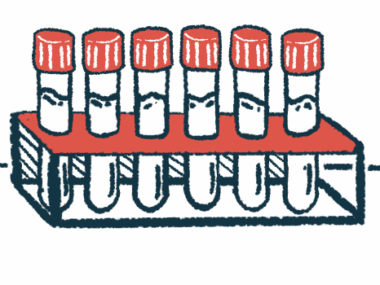New B-cell growth is impaired in AAV, study finds
Findings could inform recommendations on treatment timing
Written by |

The production of new B-cells, a type of immune cell that helps fight infections but is also involved in the abnormal immune attacks that drive ANCA-associated vasculitis (AAV), is dysfunctional in people with the autoimmune disease, a study found.
The findings could help shed light on the biological underpinnings of AAV and provide insight into the best schedule for AAV treatments, such as rituximab, that work by depleting B-cells, the researchers said.
The study, “Defects in B-lymphopoiesis and B-cell maturation underlie prolonged B-cell depletion in ANCA-associated vasculitis,” was published in the Annals of the Rheumatic Diseases.
B-cells are the immune cells responsible for producing antibodies that help the body fight invaders and cancer. In autoimmune diseases such as AAV, abnormal B-cells produce self-reactive antibodies that target healthy cells in the body.
In AAV, these abnormal antibodies attack a type of immune cell called neutrophils, ultimately resulting in inflammation that damages small blood vessels and impairs the function of several organs and tissues.
Pace of B-cell replenishment varies
One of the most common AAV treatments is rituximab, a B cell-depleting therapy marketed as Rituxan in the U.S., MabThera in Europe, and available as biosimilars. It is approved for granulomatosis with polyangiitis (GPA) and microscopic polyangiitis, the two most common types of AAV, both as an induction therapy (to bring the disease into remission) and maintenance therapy (to keep the disease in remission).
Maintenance rituximab treatment for AAV typically involves an into-the-vein infusion every six months. That schedule is based on data from other autoimmune diseases in which B-cell counts start to replenish about six months after the last rituximab dose.
But a considerable proportion of AAV patients have much slower replenishment of B-cells, and severely low B-cell and antibody levels have been documented for several years after the last rituximab dose. Low levels of all antibodies are associated with an increased risk of infections.
This discrepancy between AAV and other autoimmune diseases has long been a puzzle for scientists and has raised concerns about whether the dosing schedule of rituximab maintenance treatment is appropriate for AAV patients.
With this in mind, an international team of scientists analyzed blood samples from 91 AAV patients (median age 60.8; 39.6% women) and 58 healthy people (median age 59.9 years; 37.9% women).
Most AAV patients had GPA (68.1%) and received rituximab as induction treatment (84.6%). A total of 10 patients had taken short-term glucocorticoids, an anti-inflammatory and immunosuppressive treatment, and four had received no immunosuppressive treatment.
B-cell compartment analyses were performed at a median of 17 months after the last rituximab dose. In the meantime, most rituximab-treated patients started maintenance treatment with other immunosuppressive treatments, including azathioprine and methotrexate.
Results showed that, compared with healthy people, AAV patients had significantly lower levels of transitional B-cells, which are immature B-cells that have recently exited the bone marrow, where B-cells and other immune cells are made.
This difference was seen even in AAV patients who hadn’t been treated with rituximab, implying that low transitional B-cell count is a feature of the disease itself, not an effect of the medication.
Further analysis, including examination of bone marrow cells collected from seven patients and four healthy controls, indicated that the production of B-cell precursors, as well as their maturation, is significantly impaired in the bone marrow of AAV patients. Again, this was observed regardless of previous rituximab treatment.
The finding “points to a non-permissive environment to B-cell development in patients with AAV, independent of rituximab treatment,” the researchers wrote.
Low levels of receptor protein
Other blood sample analyses showed that circulating B-cells from rituximab-treated AAV patients produced significantly lower levels of BAFF-R, a receptor protein that helps to maintain B-cell survival and supports transitional B-cell maturation.
A non-significant trend toward lower BAFF-R levels was detected in the group of patients not treated with rituximab relative to healthy people.
Low levels of this protein could contribute to worse survival of mature B-cells following rituximab treatment, though “the impact of BAFF-R [levels] on the peripheral B-cell development defect in AAV has to be further examined,” the scientists wrote.
The findings suggest that in AAV, the body’s ability to make new mature B-cells is substantially impaired. As a result, B-cell replenishment is substantially slowed after treatment with a B-cell-depleting agent like rituximab.
The results may help guide discussions about the best timing for rituximab retreatment in AAV patients, as they “call for caution with regard to long-term B-cell depletion, stimulate the discussion on biomarker-guided on-demand therapy after RTX [rituximab] administration, [and] emphasise the need for regular [antibody level] controls,” the researchers wrote.
Given that azathioprine and methotrexate are known to be associated with “the longest B-cell repopulation time and with a striking reduction in transitional B cells,” the team wrote, the study results also indicate that administering these treatments after rituximab induction “can significantly prolong the B-cell depletion time.”
The scientists also noted a need for further studies to determine exactly why people with AAV have impaired production of new B-cells.







